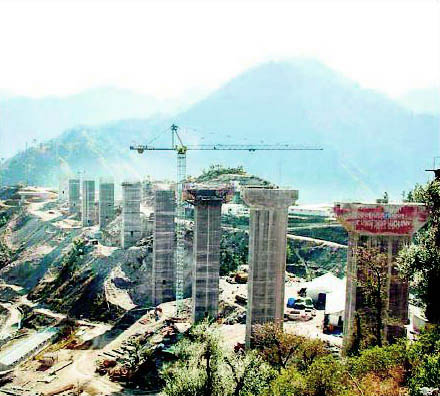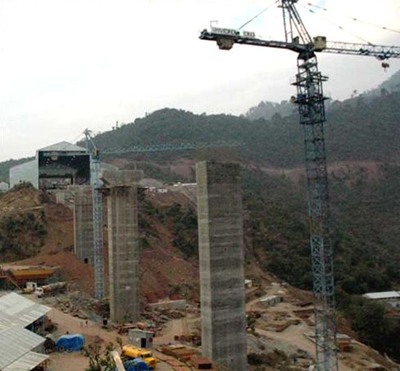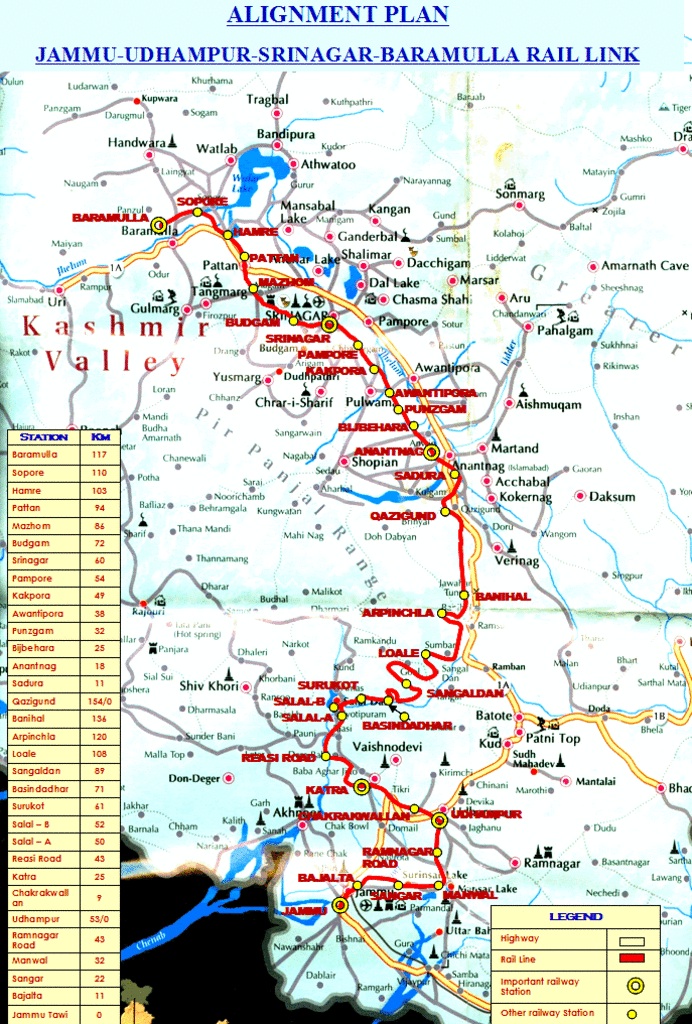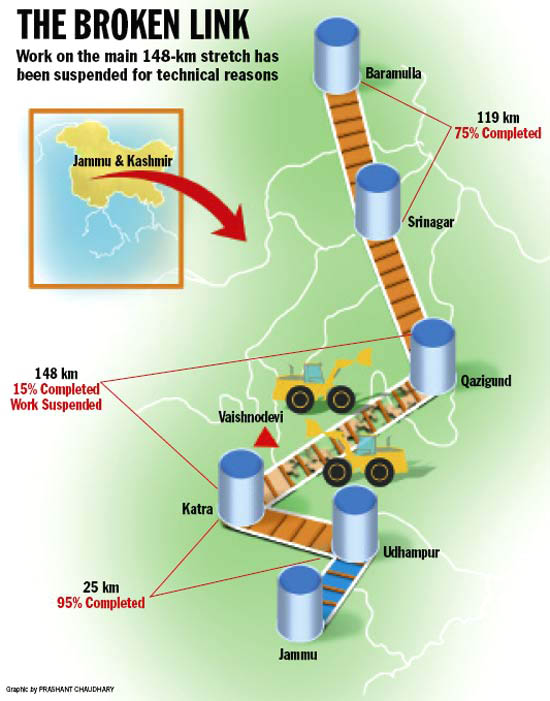Difference between revisions of "Chenab River Railway Bridge"
| Line 37: | Line 37: | ||
| − | [[File:ChenabMap.jpg| | + | [[File:ChenabMap.jpg|692px|center]] |
Map of the Kashmir Railway route. The Chenab Bridge will be located between the stations of Reasi Road and Katra. | Map of the Kashmir Railway route. The Chenab Bridge will be located between the stations of Reasi Road and Katra. | ||
Revision as of 21:43, 6 December 2012
Chenab River Railway Bridge
Katra, Jammu-Kashmir, India
1,053 feet high / 321 meters high
1,509 foot span / 460 meter span
2017
There is probably no other natural barrier on earth that has been more formidable to railway engineers than the Himalayan mountain range that stretches across northern India. This became all too obvious when the Indian railway decided to build a line connecting the states of Jammu and Kashmir in the Himalayan foothills of Northwestern India. When construction began in earnest in 2002, the engineers never expected extensive delays due to poor geology, access problems, tunnel excavation difficulties and labor disputes. When the 213 mile (343 kilometer) line finally opens in 2017 (or later), it will be the most expensive stretch of India’s 40,000 mile (64,374 km) railway network.
Of the many large barriers the railway crosses, the most daunting is the wide gorge of the Chenab River. With its headwaters high up in the Himalayan mountain range, the river carved a deep gash that left its elevation more than a 1,000 feet (305 mtrs) below the level of the rail line. The engineers decided the only bridge type suitable for the location would be a massive steel arch - the highest ever built for a railway at 1,053 feet (321 mtrs) from deck to water. Only an arch is capable of handling the weight of a 300 ton locomotive along with a thousand tons of passenger cars. With a length of 1,509 feet (460 mtrs), the main span will rank 7th among the world’s longest arches. Its height will also surpass both China’s Zhijinghe highway and Beipanjiang railway bridges, making it the highest arch bridge of any kind in the world.
Construction will be done by building the arch outward from both sides of the canyon using the stayed cantilever method. This technique was also used for the similar design of the New River Gorge bridge in West Virginia, U.S.A. The uneven sides of the gorge will result in one side of the arch terminating into the foundation 40 feet (12 mtrs) higher than the other side.
In September of 2008 it was announced that the Chenab bridge was canceled despite the completion of the approach viaducts in 2007. Difficult geological conditions on the steep slopes supporting the arch foundations were sited as the reason as well as the development of a lower, more direct route through tunnels. As of early 2013, the latest word is that the original route is back on track and the bridge will be built as originally planned.
Whenever the Chenab bridge is finally completed, it will be more than just another bridge but a prestigious symbol of how far India and its railway engineers have come since the country’s first mile of railway track became operational more than 150 years ago.
Chenab and Anjikhad bridges are located less than 10 miles (16 km) north of the busy tourist town of Katra. Despite its small population, Katra is loaded with hotels and restaurants due to its proximity to the Vaishno Devi, the second most visited religious shrine in all of India after the Tirumala Venkateswara Temple. Located a mile above sea level, the large complex of white buildings steps down the side of the holy mountain of Vaishno Devi. The Hindu shrine is located about 8 miles (13 km) from Katra and is visited by millions of people a year. There is an airport in the much larger city of Jammu, located 30 miles (48 km) south of the Chenab bridge.
The Kashmir valley has always been one of the most isolated regions in India. When the rail line is finally finished, it will finally open up the area to the rest of India and the outside world. For a more extensive history of the railway and its construction visit http://en.wikipedia.org/wiki/Kashmir_railway.
The approach spans were completed several years before construction began on the main arch.
Map of the Kashmir Railway route. The Chenab Bridge will be located between the stations of Reasi Road and Katra.
Image by Prashant Chaudhary





